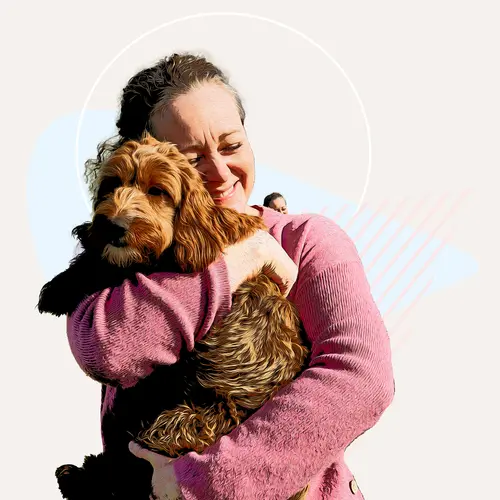The transition from puppyhood to adulthood is a key time for your dog. Being a puppy is all about learning, while young adulthood is about building healthy habits for life. Learn what your dog needs as it grows into a young adult.
Dog Life Stages
Dogs progress through life in four stages:
- Puppyhood
- Young adulthood
- Mature adulthood
- Seniorhood
From birth to twelve months, you can consider your dog a puppy. Once your puppy turns a year old, it transitions into young adulthood. Your puppy may still be energetic, excited, and playful, but over time its activity level decreases. That’s why caring for a young adult dog is so important – you’re establishing the foundation for the rest of its life.
Checklist for Success
You likely already have many of the items on this list from when your dog was a puppy. If not, now is a great time to invest in tools that help you keep your dog healthy:
- Brush and comb for general fur care
- Flea comb
- Collar or harness with a license
- Appropriately sized leash
- Crate for sleeping
- Dog bed, blanket, or towel for comfort
- Toothbrush and toothpaste specially formulated for dogs
- Poop scooper and bags
Understanding Behavior
You may think that the puppy stage is the hardest, but the young adult stage is often the most difficult for dog owners. Your dog is maturing and learning about social and behavior limits. The choices you make while your dog is a young adult affect your relationship for the rest of its life.
Annual Veterinarian Visits
In youth, your dog needs to see the veterinarian at least once each year unless you have health concerns in between. Your young adult dog’s health may seem at its peak in youth, but early detection of problems is important. By establishing a relationship with a single veterinarian, you ensure that the person gets to know your dog and its medical history very well.
Aside from general health and wellbeing, things to address at annual checkups include:
- General behavior and play concerns
- Housetraining
- Any noticeable fears
- Aggressiveness or unruliness
Housetraining
Much of your dog’s training is established within the first year, but consistency into young adulthood is important. If you crate train your young adult dog, you may try to leave your dog out in a single room to see how it does. Slowly over time, you can allow your dog the opportunity to roam free if it does well in a single room.
If your dog makes a mess or destroys something when being left out, it may have anxiety. Dog crates often provide a sense of comfort and security. You can go back to leaving your dog in its crate and try again in the future.
General Dog Training
If you began training your dog as a puppy, continue building on that foundation and enforcing good behavior. It’s important to practice the things your dog learned in puppy training.
If your dog needs more training or hasn’t started yet, it’s not too late. When you practice obedience training techniques at home, use positive words and encouragement to reinforce good behavior. Avoid yelling, scolding, and getting upset with your dog.
Activity for Your Dog
Your dog may show signs of calming down after puppyhood, but activity is even more important now. Being physically active helps your dog build muscle mass and maintain mental health. You can help your dog stay active by:
- Going for neighborhood walks
- Playing outside
- Going on walks or hikes in new places
- Trying new toys for inside and outside
Oral Hygiene
Brushing a young adult dog’s teeth is important because their permanent adult teeth are growing in as puppy teeth fall out. You may notice that your dog wants to chew all day long. Provide safe chew toys to protect your dog’s teeth from breaking on surfaces it shouldn’t chew on.
You can also introduce treats that offer dental benefits. Tooth cleaning treats for young adult dogs don't replace regular brushing, though. Talk to your veterinarian about how often you should brush your dog’s teeth and establish the habit early in life. These steps can prevent dental disease and other health issues later in life. If you have concerns about your dog’s teeth, your veterinarian can perform x-rays to identify any obvious issues and address them.
Feeding a Young Adult Dog
In the first year of life, you may have given your dog specialized puppy food to fuel its growth. Your dog's transition into adulthood means a transition to new dog food, too. Ensure that you choose high-quality food without additives and fillers that may lead to health problems later in life.
At one year old, your dog can eat one meal per day. Limit the human food your dog has access to and offer treats sparingly. Eating too much leads to obesity later in life, putting your dog at risk for dangerous health conditions. While one meal a day is enough, your dog needs access to fresh water at all times.

